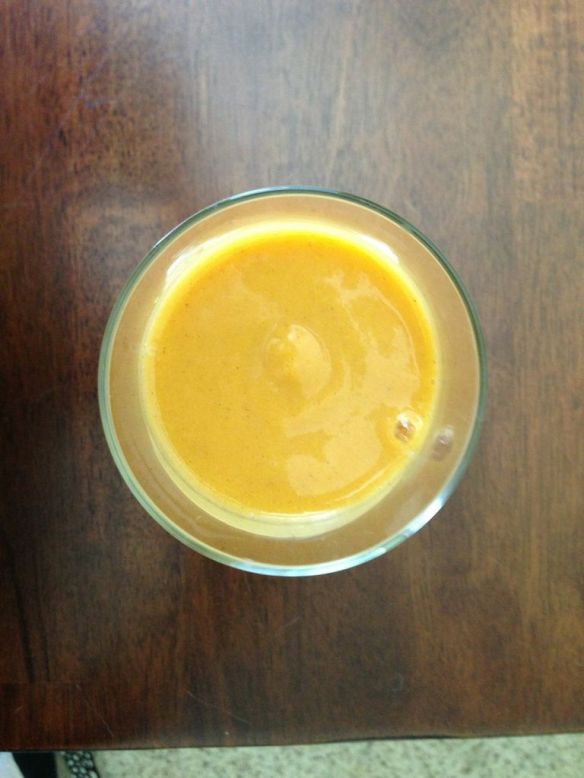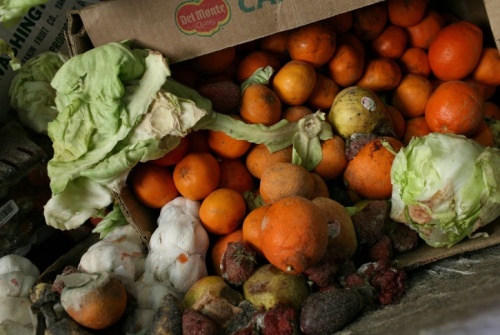Last night I roasted a whole butternut squash that has been in the fridge for nearly a month. It was a smallish squash, less than two pounds, but I still had two cups of leftover squash at the end of dinner.
As I stared at the remaining, flesh and the two bananas on the counter, I dreamt about breakfast. (Yes, I know, a full tummy and I can still daydream about my next meal.) Would a squash and banana smoothie be tasty?
Turns out yes, and I am not the first to pair the two. I googled and found two recipes that piqued my interest:
- On the food blog, Perks of Being a Foodie, I found recipe that spiced up the smoothie so the author could get her pumpkin fix. And,
- And VideoJug shows how to combine juice, bananas, and squash into a smoothie that kids will drink up.
Since I find the squash and banana sufficiently sweet, I omitted the honey and simply combined a banana, a cup of butternut squash, and some almond milk with ground cinnamon, ginger, and nutmeg. I suspect you can add any combination of spices. Any takes on a madras banana and squash smoothie?
In my research, I found a few other creative ideas that involve butternut squash. I did not want a pie or soup or gnocchi treat. Two recipes in that search have me thinking of new sauces and veggie ideas that go way beyond the squash.
- The Oh She Glows blog has a recipe for a butternut squash and vegan cheese sauce to enjoy a satisfying Mac & “Cheese”.
- And a “Warm squash and arugula salad” from The Kitchn. This one I am planning to try tonight with romaine hearts and some young goat cheese.
Oh, and if you are wondering about our zero waste goal: I will eat the whole squash. Seeds can be roasted and the skin is edible. Simply roast your squash whole in the oven with a bit of oil and salt on the skin and you will have a tasty nosh that is 100% edible. I like it almost as much as baked potato skins.













